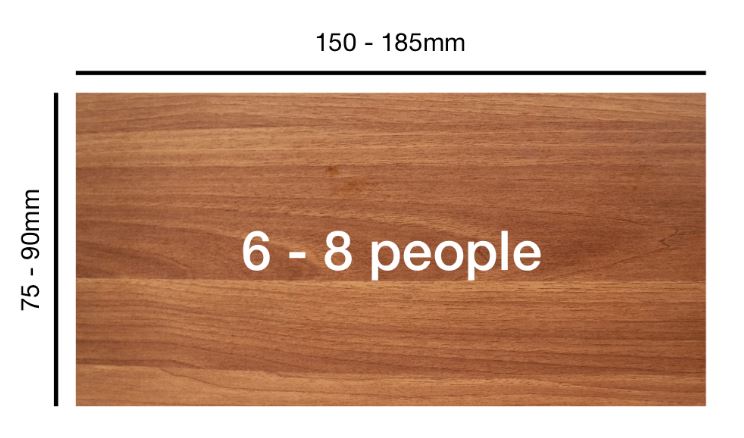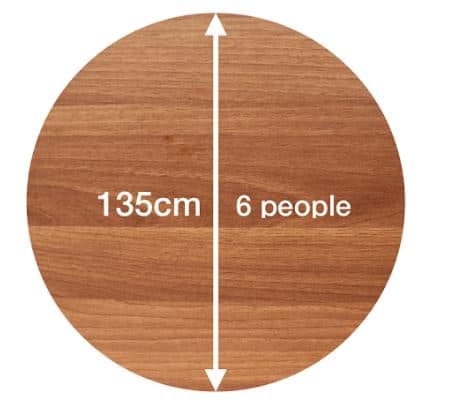The dining table is a central part of any home. Much of the time spent by a family together is over meals. It’s important to make sure your dining table is comfortable and easy on the eyes.
Though dining tables come in many forms, you first have to consider of course how many people will be using it regularly, and how well it fits in the size of the room.
Room needed around dining table
Its position in the room is an important consideration for the size of the table. Where it is set, its edges should be at least 100cm (though around 125cm is recommended) from walls or any other furniture around it. This is to allow people to pull back their seats and get up without any sort of difficulty.
Table Shape and Size
Generally, people need a space of around 60cm to eat comfortably next to one another (although again, there’s nothing wrong with a little more allowance). Usually when you purchase a table, the recommended number of people that it can seat is given so as to avoid any issues of overcrowding.
Standard Dining Table Size
Rectangular tables are very versatile because they work in many different types of rooms, and leave an ample amount of space for people to walk around.

Rectangle standard tables work for seating a larger number of people, and are efficient in that they can easily be combined with other tables when the occasion calls for it. You might be able to get away with using a wide kitchen bench as your table if you incorporate bar seating.
More often than not, a rectangular table’s width increases as its length increases, though to a lesser degree.
| Number of People | Recommended Width | Recommended Length |
| 2 people | 75-80cm | 105-110cm |
| 4-6 people | 60-75cm | 120-150cm |
| 6-8 people | 75-90cm | 150-185cm |
| 8-10 people | 100-110cm | 210-245cm |
| 10-12 people | 125-150cm | 245-335cm |
Note that for all of these recommendations, the space allotted per person exceeds the recommended 60cm by at least a little bit.
Circular Table size
Tables that are round in shape go well in rooms that don’t have a very large area. They save space because they don’t have corners, and they are usually able to seat more for the floor area that they take up. However, they are less efficient when you need to add people, because they don’t really combine with other tables.

Circular tables can also seat more when they use a pedestal to stand them up rather than multiple legs. Table legs can be obstructions for chairs and can take up leg room that could seat more people comfortably. The drawback is that bigger circular tables (150cm or more) make it harder to pass around food. Some people opt to put a lazy Susan on tables this big, for convenience.
| Number of People | Recommended Diameter |
| 2 people | 75cm |
| 4 people | 90cm |
| 6 people | 135cm |
| 8 people | 150cm |
| 10 people | 215cm |
| 12 people | 245cm |
Square Table Dimensions
Square tables are popular because they complement square rooms well, and let everyone sit closer together compared to a rectangular table, letting everyone talk to one another and bond more easily. However, their downside is the same as that of circular tables — bigger square tables make it harder to pass food around.
| Number of People | Recommended Side Length |
| 2 people | 75-85cm |
| 4 people | 90-125cm |
| 6 people | 130cm-155cm |
| 8 people | 180cm-220cm |
| 12 people | 240cm+ |
Dining Table Height
The standard height for dining tables is 76cm, though the range of 72-76cm is acceptable. The standard seat height for dining chairs on the other hand, is 47cm. As a general rule, it is best to have around 24-30cm of space between the tabletop and the seat, so that nobody’s legs feel too cramped.

Of course, these recommended dimensions should match your home, and the space you have for your table. Good dining tables last, so it would be really good to get something suited to the people that it will be seating.

